The Cottage
Houses within 15km of this house
Displaying 130 houses.
Houses within 15km of The Cottage
Displaying 130 houses.
| House name | Description | |
|---|---|---|
| Warrensbrook | Richard Donovan was leasing this property to Daniel Donovan at the time of Griffith's Valuation, when it was valued at £14. There is still a house at this site, part of a large farm complex. |
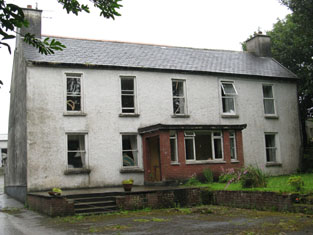
|
| Fort Prospect (Clonakilty) | Reverend Benjamin Swete was leasing this property to Richard Wheeler at the time of Griffith's Valuation, when it was valued at £15 15s. In 1837, Lewis notes it as the seat of R. Wheeler. It is still extant. | |
| Curraghalicky | Edward Powell was leasing this property to Edward Ellis at the time of Griffith's Valuation, when it was valued at £7 10s. The site is now occupied by substantial modern farm buildings. | |
| Belleview (Bandon) | William Seymour was leasing this property from the Earl of Shannon's estate at the time of Griffith's Valuation, when it was valued at £14. A house still exists at this site. |

|
| Rock Castle Mill | John and James Gillman were leasing this property to John Hazel at the time of Griffith's Valuation, when it was valued at £8 and the mill at £52. In 1837 Lewis had noted it as the property of Mr. Heazle. It does not appear on the later 25" Ordnance Survey Map, suggesting perhaps, that it had ceased operations by the end of the nineteenth century. | |
| Lakemount House | Samuel Millner was leasing this property to Benjamin Millner at the time of Griffith's Valuation, when it was valued at £ 6 10s. In 1814 Leet notes Lakemount as the seat of George Beamish. There is still a house at this site. |

|
| Kilcaskan Castle | At the time of Griffith's Valuation, William O'Neill Daunt held this property in fee when it was valued at £32. In 1837 Lewis notes that it was held by Daunt and describes it as " a handsome castellated mansion". Both Taylor and Skinner and Wilson refer to it as a seat of the Daunt family in the 1780s. In 1894 Slater referred to it as the seat of Achilles Daunt. In 1906 it was also owned by Achilles Daunt and valued at £12 10s. The Irish Tourist Association Survey of 1944 referred to it as the residence of Miss M.O'Neill-Daunt. It is still extant. |

|
| Knockaneady | John Beamish was leasing this property to John Schofield at the time of Griffith's Valuation, when it was valued at £6. It does not appear on the later 25-inch Ordnance Survey map of the 1890s. | |
| Ballymoney Glebe House | At the time of Griffith's Valuation, Reverend Robert Meade was leasing this property from the Trinity College estates when it was valued at £23. A slightly different building is labelled "Rectory" on the 25-inch Ordnance Survey map of the 1890s. It is still extent and in use. |
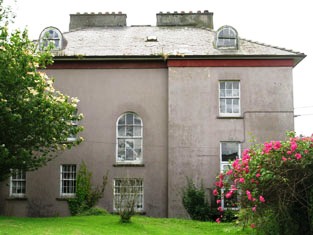
|
| Phale Court | At the time of Griffith's Valuation, Standish Smithwick was leasing this property from William Stanley, when it was valued at almost £8. It is recorded as Phale House on the 1st edition OS Map and as Phale Court on the later 25 inch Map. In 1837, Lewis refers to Phale House as the seat of E.H. Good. In 1914 it was occupied by the Hosford family. In 1786 Wilson refers to it as the seat of John Wade. It is also associated with the Deasy family. |
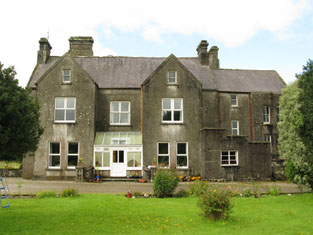
|
| Mount Beamish | John Beamish was leasing this property to Rev. John Baldwin at the time of Griffith's Valuation, when it was valued at £15. In 1837 Lewis records it as the seat of J. Beamish. Leet noted it as the seat of Rev. Samuel Beamish in 1814. Farm buildings exist at the site now. | |
| Drombofinny House | Benjamin Daunt was leasing this property from the Devonshire estate at the time of Griffith's Valuation, when it was valued at almost £8. It is labelled Drombofinny House on the 25-inch Ordnance Survey map of the 1890s. A house still exists at the site. | |
| Kilmoylerane House | Richard J. Long was leasing this property from the Devonshire estate at the time of Griffith's Valuation, when it was valued at £15. A house and extensive farm buildings exist at the site. | |
| Roseville | At the time of Griffith's Valuation, Henry Beamish was leasing this property to Bernard Beamish, when it was valued at £16. Henry Beamish was also the owner of a flour mill [W381539] in the same townland, leased to William Norwood, and valued at £150. The mills do not appear on the 25-inch Ordnance Survey map of the 1890s. Roseville is still extant. | |
| Kilrush House | Thomas Beamish held this property in fee at the time of Griffith's Valuation, when it was valued at £24. Lewis records it as the seat of A. Poole in 1837. The National Inventory of Architectural Heritage records that an earlier house, built around 1650, originally stood at this site and the extant house may incorporate parts of that earlier structure. |

|
| Lisbehagh | Sampson Beamish was leasing this property to John Donovan at the time of Griffith's Valuation, when it was valued at £8. | |
| Church Hill House | At the time of Griffith's Valuation, Rev. Mountifort Longfield was leasing this property from Susan McDonnell, when it was valued at £24. [This may be Susan McDaniel of Bandon, as Daniel McDaniel of Knockmacool, is listed in a Bandon Directory of 1876]. Lewis records the house as the seat of Mountifort Longfield in 1837. It is still extant. |

|
| Knockmacool House | Mrs Susan McDonnell [McDaniel] held this property in fee at the time of Griffith's Valuation, when it was valued at £11 10s. It is labelled Desert Cottage on the 1st edition Ordnance Survey map and Knockmacool House on the later 25-inch edition. An Encumbered Estates Sale notice of May 1851 indicates she had previously held it from the Warren estate. A house is still extant at the site. | |
| Kill House | Richard J. Long was leasing Kill House from the Attley [?] estate at the time of Griffith's Valuation, when it was valued at £8. There is still a house at the site. | |
| Youghals House | A Miss Walsh was leasing this property from the Earl of Shannon's estate at the time of Griffith's Valuation, when it was valued at £14. This house is still extant. |

|
| The Retreat (Island) | Richard Beamish was leasing this property from Winspur Toye at the time of Griffith's Valuation, when it was valued at £20. A house is still extant at the site. | |
| Kilgarriff House | Henry Bence-Jones, a distinguished physican and scientist, was leasing this property from Rev. Henry Stewart, at the time of Griffith's Valuation, when it was valued at £24 10s. In 1837, Lewis refers to it as the seat of Capt. Davis. A house still exists at the site. | |
| Bushmount | Not visible on the 1st edition Ordnance Survey map but named as Bushmount on the 25-inch edition of the 1890s. Johanna Deasy was leasing this property from the Earl of Shannon's estate at the time of Griffith's Valuation, when it was valued at £22 10s. The Deasy family were brewers in the town of Clonakilty. [Now the site of St. Paul's Nursing Home.] | |
| Fern Hill | AT the time of Griffith's Valuation, this property was being leased from the Earl of Shannon's estate by Anna Atkins. It was then valued at £28. In 1837, Lewis refers to it as the seat of W.F. Atlkin. Now part of the Fernhill House hotel complex. |

|
| Lower Tawnies Cottage | Rev. Henry Stewart was leasing this property from the Earl of Shannon's estate at the time of Griffith's Valuation, when it was valued at £13 15s. Lewis notes it as the seat of the Rev. Dr. Stewart in 1837. It is still extant but unoccupied. |

|
| Millville | Thomas and James Allen were leasing this property from the Earl of Shannon's estate at the time of Griffith's Valuation, when it was valued at £15 and the adjacent mills at £37. The house is still extant. Modern housing now occupies the site of the mill. | |
| Scartagh Cottage | Tradition locally suggests Scartagh Cottage was originally the property of the Townsend family. By the time of Griffith's Valuation, it was being leased by Henry Galway to Matthew O'Hea. Various members of the Galway family held small amounts of land in the area while Matthew O'Hea, of the War Office, London, is recorded as the owner of 70 acres in county Cork in the 1870s. Scartagh Cottage has been replaced by a convent on the 25-inch Ordnance Map towards the end of the nineteenth century and that building is still extant. | |
| Ahalisky | William Bence-Jones held this property in fee at the time of Griffith's Valuation when it was valued at £14. A plant nursery is identified at this location on the 1st edition Ordnance Survey map. Extensive farm buildings occupy the site now. | |
| Kilmaloda House | Thomas Beamish held this property in fee at the time of Griffith's Valuation, when it was valued at £50. In 1837, Lewis refers to it as the seat of Sampson Beamish. In 1906 it was owned by Sampson Beamish and valued at £68 15s. Local sources suggest it was built by the earlier Sampson Beamish and occupied by his descendents until the mid twentieth century when it came into the hands of the McCarthy-Murrough family. It is still extant and occupied. In 2013 it was offered for sale. |

|
| Beaumont | William Wright was leasing this property from Rev. Thomas Beamish at the time of Griffith's Valuation, when it was valued at £10 10s. Built after the 1st edition Ordnance Survey map opposite the site of a diocesan school. In 1814, however, Leet noted Beaumount as the seat of William Beamish. Mrs. Susan Beamish, of Beaumont, Clonakilty, was the owner of over 1300 acres in county Cork in the 1870s. This house is no longer extant. | |
| Mill House (Ballinascarty) | William G. Harris was leasing this property to Charles Connell at the time of Griffith's Valuation, when it was valued at £7 15s and the adjacent mill valued at £41. It is labelled Mill House on the 25-inch Ordnance Survey map of the 1890s, though the corn mills are labelled disused at that time. A house is still extant at the site though the mills are now ruinous. | |
| Skeaf House | Herbert Gillman was leasing this property from William Austin at the time of Griffith's Valuation, when it was valued at £20 15s. Lewis recorded it as the seat of W. Austin in 1837. Together with other Austen property it was offered for sale in the Encumbered Estates Court in June 1851. In the 1870s it was the residence of John E. O'Sullivan though it was offered for sale by him in the Landed Estates Court in April 1880 when it was described as "a fine residence". A house still exists at the site. |
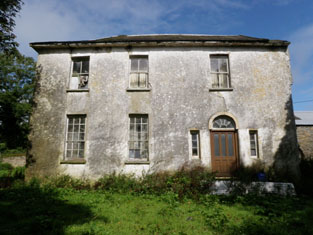
|
| Kilnagross | At the time of Griffith's Valuation, William Sullivan was leasing this property to Rev. Somerset Townsend, when it was valued at almost £12. In 1837, it was the seat of Rev. W. Sullivan. It is no longer extant. | |
| Shannonvale House & Mill | At the time of Griffith's Valuation, the Misses Newman were leasing this property to T. & J. Allen, The house was valued at £25 and the mill at £225. Lewis records it as the seat of T. Allin in 1837. The mills afterwards became the property of the Bennett family and later of the Rank company and continued in business until 1963. The house is still extant. In 1786 Wilson refers to a house in this area as "Mount-Shannon, the seat of Dr. Calnan". |
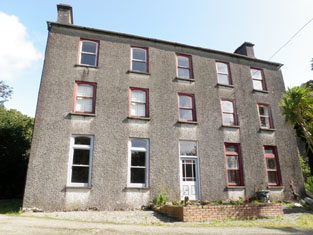
|
| Castle View Mill House | At the time of Griffith's Valuation, Francis Bennett was leasing this property to James Hayes. It was valued at £13 10s and the ajacent mill had a valuation of £56. In 1837, Lewis noted it as the seat of J. Hayes. The mill buildings are still extant at this site. |

|
| Coolwood House | John Kingston was leasing this property from the Earl of Shannon's estate at the time of Griffith's Valuation, when it was valued at £8. It is not labelled on the 1st edition Ordnance Survey map but appears on the later 25-inch map as Coolwood House. It is still extant and occupied. | |
| Castle Bernard | Described by Lewis in 1837 as " a stately mansion, built in 1806, adjacent to the site of the former castle" and originally known as Castle Mahon. It was the seat of the Bernard family in the late 1770s and 1780s and then known as Castlebernard. Occupied by Viscount Bernard at the time of Griffith's Valuation and valued at £120. It was burnt in June 1921 and is now a ruin adjacent to Bandon Golf Club. |

|
| Ballyduvane House | Ballyduvane House was held in fee by Mrs. Eliza Beecher at the time of Griffith's Valuation, when it was valued at £25 10s. Lewis refers to it as the seat of M. Becher in 1837. There is still an extant house at the site. | |
| Ballyduvane | Edward Herrick was leasing this property from Mrs. Eliza Beecher at the time of Griffith's Valuation, when it was valued at £12 5s. Lewis refers to it as the seat of E, Herrick in 1837. In 1814 Leet noted it as the residence of Thomas Herrick. Referred to by Slater as the seat of M.A.R. Beecher in 1894. There is still a house at the site. | |
| Springmount or Carhoo House | At the time of Griffith's Valuation, William Beamish was leasing this property from the Earl of Bandon's estate, when it was valued at £11 10s. On the 25-inch map, published in the 1890s, it is labelled Carhoo House. A house and farm buildings are still extant at the site. | |
| Ballyvackey House | Ballyvackey House was held in fee by Mrs. Ellen Alleyn at the time of Griffith's Valuation, when it was valued at £11. In the late 1770s and 1780s it was occupied by the Allen family. It is not shown on the 25-inch Ordnance Survey map of the 1890 and is no longer extant. | |
| Sunmount | George Beamish was leasing Sunmount to Rev. W. John Day at the time of Griffith's Valuation, when it was valued at £20 5s. Lewis refers to Ballyvackey as the seat of G. Beamish in 1837. In 1906 it was owned by William Hungerford and valued at £23. It is no longer extant. | |
| Carrigboy | E. Barrett resided at Carriguoy, parish of Kilmichael, in 1837. At the time of Griffith's Valuation John E. Barrett occupied this house valued at £15.10 shillings and held by him in fee. A lithograph of the house, with the hunt assembled outside the hall door, is included in the rental. | |
| Dromcarra House | In 1837 Lewis records J. Barter as resident at a house called Lee Mount in the parish of Inchigeelagh. The name Joseph M. Barter of Dromcarra House appears in the list of subscribers to Lewis. Thomas Barter held a house valued at £11.5 shillings in fee in Dromcarra North at the time of Griffith's Valuation. John Barter was resident at Droumcarra in the 1870s and John William Barter in 1906. A house still exists at the site. | |
| Cooldaniel | This house was the home of Barter esq in the 1770s and 1780s, of Thomas Barter in 1814, of J. Barter in 1837 and of Michael Buckley at the time of Griffith's Valuation who held it from William Gallagy. It was valued at £10. In the 1940s the Irish Tourist Association Survey noted that it had been converted to farm buildings.. | |
| Boyle Grove | Boyle Grove was the residence of William Boyle in 1814 and of J. Boyle in 1837. The 1821 Census for Dromcarra records William Boyle, a gentleman farmer aged 65 and his wife Sophia, their two sons, William and James, and their daughters, see http://myhome.ispdr.net.au/~mgrogan/cork/inch_1821_cen.htm#Dromcarra By the time of Griffith's Valuation the house was occupied by Devonshire Hawkes who held it from the Court of Chancery. It was valued at £12.15 shillings. In March 1852 Boylesgrove, the estate of William Boyle, was advertised for sale. The rental records that the house was let to Devonsher P. Hawkes for 7 years in 1849 by the Court of Chancery. A house still exists at the site. | |
| Greenville | The home of a branch of the Swete family from the early 18th century, occupied by Samuel Swete in 1814 and by B. Swete in 1837. Valued at £35 at the time of Griffith's Valuation and held by Benjamin Swete in fee. The house is described as the family residence in the sale rental of 1877 but was held on a short term lease by Frederick Theodore Courtis. It was in ruins by the 1940s as the Irish Tourist Association Survey reported that portion of the ruins were visible on the farm of Mr. Cashman. It also referred to an attack on the house by the Whiteboys in the 1820s which has resulted in several of them being killed. | |
| Curraclogh House | Mary Gibson occupied this house at the time of Griffith's Valuation. It was held from Sir Augustus Warren and was valued at £12.10 shillings. This house is no longer extant. | |
| Elmglyn | Elmglyn was the residence of T. Gollock in 1837 and of Patrick Daly at the time of Griffith's Valuation. He held the property from the representatives of Thomas Gollock and the buildings were valued at £11. The original house is not extant. | |
| Lissardagh | The residence of William Baldwin at the time of Griffith's Valuation, held by him in fee and valued at £20. There is still a house extant at this location. |
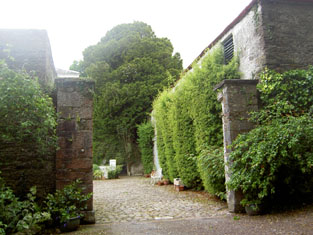
|
| Warren's Court | Kilbarry was bought by the Warrens in the late 17th century. The house Warren's Court was built in the 18th century and was the main seat of this family in the 18th and 19th centuries. In 1750 Smith refers to Kilbarry the "handsome house" of Robert Warren. Wilson notes it as "the fine seat of Thomas Warren" in 1786. In 1894 Slater refers to it as the seat of Sir A. Warren. In 1906 it was valued at £66 and occupied by Sir Augustus Riversdale Warren.. It was burnt in June 1921 during the War of Independence when it was the residence of Sir Augustus D. Warren. The original house is no longer extant. In the 1940s the Irish Tourist Association Survey reported that a modern two-storey house had been constructed nearby. | |
| Crookstown | Smith records Mr Crook of Crookstown in 1751. The mother of Robert Warren, 1st Baronet, was Anne Crooke and this house may have got its name from her. It was the home of a branch of the Warren family from the late 18th century, occupied by the Reverend E. W. Warren in 1814, by the Reverend R. Warren in 1837 and in the early 1850s. The Reverend Robert Warren held the property in fee and the buildings were valued at £48. It was burnt in June 1921 during the War of Independence when it was the residence of Robert Warren. It is still extant and occupied. |
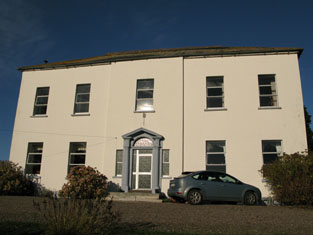
|
| Bellmount | Bellmount, Innishannon was the residence of the Reverend James Crowley in 1814. T. Herrick was the proprietor of Bellmount in 1837 along with a large flour mill. The mill and house were in the possession of Patrick Howard at the time of Griffith's Valuation and held from John E. Herrick. The house was valued at £18 and the mill at £65. The mill building, though now disused, is still extant. |
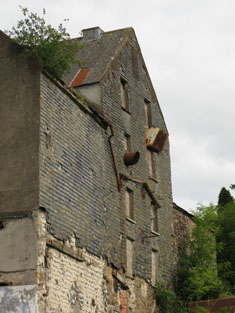
|
| Palace Anne | Wilson, writing in 1786, refers to Palace Anne as the seat of Mr. Bernard. Both Leet in 1814 and Lewis in 1837 note Palace Anne as the residence of Arthur B. Bernard. It was held in fee by him in 1851 when it was valued at £30. Lewis describes it as " a stately mansion, beautifully situated". Bence Jones states that it was named in honour of Anne LePoer, wife of Arthur Bernard, who built the house in 1714. The house became dilapidated after the sale in the mid-nineteenth century and much of it has been demolished though one wing still survives. In 1944 the Irish Tourist Association Survey reported that it was then in a possession of Mr Warner who had refurbished this wing as a dwelling. The Survey provides a detailed description of the remainder of the property. |

|
| Roundhill | The house and demesne at Roundhill were offered for sale in the Encumbered Estates Court in 1855. The sale notice indicates that the property was being leased by the Bowens to the Earl of Bandon's estate. Leet refers to Roundhill as the residence of Rev. Kenny in 1814. The building is now in use as part of Bandon Grammer School. |

|
| Richmount | Richard Sealy held this property in perpetuity in the early 1850s when it was valued at £45.Lewis also notes it as his seat in 1837. It had been a residence of the Sealy family since the early eighteenth century. The site is now occupied by Bandon Grammer School. | |
| Clancool House | Held in fee by Thomas W. Hewitt at the time of Griffith's Valuation, when it was valued at £25. Lewis refers to Clancool as the seat of Mrs. Gillman in 1837. This house is still extant. |
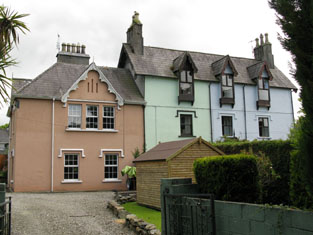
|
| Curravarahane House/Bernard Court | William Smith Bernard was leasing this property from the Bandon estate at the time of Griffith's Valuation, when it was valued at £42. Lewis notes the residence of W.S. Bernard, as The Farm, in 1837. It was labelled Bernard Court on the 25-inch Ordnance Survey map of the 1890s. It is still extant. |

|
| Gurteen Old Mill | Samuel Levis was leasing this property, including a mill, valued at £10, to John Crowley, at the time of Griffith's Valuation. Earlier, in 1786, Wilson refers to a property at Gurteen owned by Mr. Gilman. It is labelled Gurteen Old Mill on the first edition Ordnance Survey Map. It does not appear on the 25-inch Map of the 1890s and there is no trace of it now. | |
| Mayfield | In the 1770s and 1780s, Poole Esq was resident at Knocknaville near Bandon. Thomas Poole held Mayfield in perpetuity at the time of Griffith's Valuation, when it was valued at £48. Both Lewis, in 1837, and Leet, in 1814, also refer to it as his residence. Mayfield was burnt in June 1921 during the War of Independence when it was the residence of Hewitt R. Poole. It is now a ruin. |

|
| Hare Hill | At the time of Griffith's Valuation, Hare Hill was being leased by Thomas Beamish from the Poole estate, when it was valued at £20. Lewis notes it as the seat of J. Beamish in 1837. The National Inventory of Architectural Heritage notes that it was partially damaged by fire in the early 1920s but subsequently restored. |

|
| Sun Lodge/Hoe Lodge | Sun Lodge was being leased by James Hallinane from the Poole estate in the 1850s when it was valued at £13 10s. Lewis refers to it as the seat of W. McCarty in 1837. It is labelled Hoe Lodge on the 25-inch Ordnance Survey map of the 1890s, the name by which it is still known. |

|
| Mount Prospect (Bandon) | William Lane was leasing this property from the Allman estate at the time of Griffith's Valuation, when it was valued at £37. Lewis refers to Mount Prospect as the residence of Mrs. Bradshaw in 1837. A house still exists at this site. |
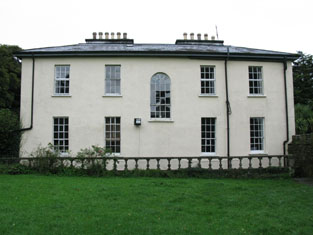
|
| Milton House (Bandon) | Elizabeth Swete was leasing Milltown from Miss McCarthy at the time of Griffith's Valuation, when it was valued at £22. It is labelled Miltown House on the 1st edition Ordnance Survey map but as Milton House on the 25-inch ediiton of the 1890s, the name by which it is still known. The National Inventory of Architectural Heritage suggests it was built for the Allman family. |
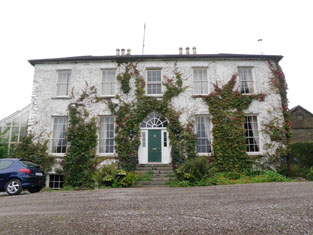
|
| Overton | Overton House was held by Miss McCarthy at the time of Griffith's Valuation, when it was valued at £32. Lewis notes it as the residence of Col. Clerke in 1837. it is a house principally associated with the Allman family. The adjacent cotton mill is described as "disused" on the 25-inch Ordnance Survey map of the 1890s. Both buildings are now in ruins. |

|
| Roundhill House | This house was the home of Travers Esq in the 1770s. The representatives of Robert Travers were leasing this property to Timothy Crowley at the time of Griffith's Valuation, when it was valued at £198 including the nearby mill complex. Both buildings are still extant. |
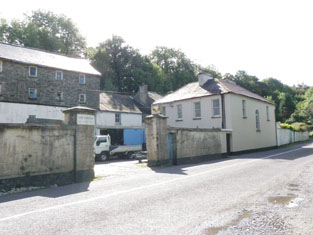
|
| Finnis | Thomas Gash was leasing offices from the Devonshire estate in 1851 when the buildings were valued at £11. A house and extensive farm buildings exist at the site now. | |
| Cashelmore House | In 1851 Thomas Beamish was leasing this property from Richard Longfield O'Connor when it was valued at £18. Lewis refers to it as the seat of J. Beamish in 1837. It was the residence of John Beamish in 1814. Buildings are still extant at the site. | |
| Kilcolman House | Held in fee by William Galway in 1851 when it had a valuation of £38. In 1837 Lewis identified it as the residence of Adderley Beamish, "beautifully situated on the banks of the river Bandon and surrounded by fine plantations". Capt. Beamish had fought in the Napoleonic campaigns at Talavera and Waterloo. He also had a house at Knaresborough in Yorkshire. Kilcolman was burnt in June 1921 during the War of Independence when it was the residence of the Longfield family. It is now a ruin. | |
| Kilhessan Lodge | James Jellett was leasing this house from the Poole estate in 1851 when it had a valuation of £13. A house is still extant at the site. | |
| Callatrim Retreat/Callatrim House | Held by Jacob Biggs from the Devonshire estate in 1851 when it had a valuation of £10. It is labelled Callatrim Retreat on the 1st edition Ordnance Survey map but as Callatrim House on the later 25-inch map of the 1890s. A house and extensive farm buildings are extant at the site. | |
| Mount Bernard | William Bernard was leasing this property from the Devonshire estate at the time of Griffith's Valuation, when it was valued at £15 10s. A house is still extant at this site. |

|
| Carhoon House | Thomas Bullen was leasing Carhoon from the Devonshire estate in 1851 when it was valued at £10 10s. It is still extant and part of a large farming enterprise but not occupied. |

|
| Coolfadda House | Alexander Swanston was leasing Coolfadda House from the Devonshire estate in 1851 when it had a valuation of £30. Lewis refers to it as the seat of B.Popham in 1837. A house still exists at the site. |

|
| The Retreat (River View House) | In 1851 Thomas K. Sullivan was leasing this property from the Devonshire estate when it had a valuation of £38. It is labeled Riverview House on the 1st-edition Ordnance Survey map but has changed to The Retreat by the 1890s. It is still extant. |

|
| Hill House (Bandon) | William C. Sullivan was leasing this house from the Devonshire estate in 1851 when it was valued at £20. It is labelled Barrett's Hill House on the 1st edition Ordnance Survey map but as Hill House on the 25-inch edition of the 1890s. It does not appear to be extant now. | |
| Kilbrogan Glebe | Held by Rev. Charles B. Bernard from the Ecclesiastical Commissioners in 1851 when it had a valuation of £34. It is still extant and now known as Mount Grellan House. |

|
| Laragh House | In 1851 Edmund Murphy was leasing this property, then valued at £28, from the Devonshire estate. There was a mill adjacent. Lewis records it as the residence of I. Swanton in 1837. It is still extant and part of a large farming enterprise. |

|
| Mishells House | In 1851 being leased by William A. O'Connor from the Devonshire estate and valued at£16. There is an extant house at the site. | |
| Mallowgaton | Leased by Robert Foulkes from the Devonshire estate in 1851 when it was valued at £11 10s. Labelled Mallowgaton on the 1st edition Ordnance Survey map and as Mallowgaton House on the 25-inch edition of the 1890s. It is still extant. | |
| Shinagh House | Leased by Thomas Banfield from the Devonshire estate in 1851 when it was valued at £18. Local sources suggest that the Banfields had resided there since at least the 1690s. This building is labelled Shinagh House on the 1st edition Ordnance Survey map but has disappeared by the 1890s when Shinagh House is shown some distance north-east of the original site at W457555. A business centre now occupies the site. | |
| Woodfort (Bandon) | John Ottley was leasing Woodford from the Alcock family in 1851 when it was valued at £25. It is still extant. | |
| Roughgrove | Leased by Benjamin Hosford from the Alcock estate at the time of Grifith's Valuation, when it was valued at £30. It was included in the sale of Hosford's estate in the Encumbered Estates Court in January 1851, when it was noted that it was "a handsome mansion house, occupied by John Ottley who had spent considerable sums on improvement". Both Lewis, in 1837, and Leet, in 1814, refer to it as the seat of Maskelyne Alcock. This is possibly also the property noted by Wilson in 1786 as Ballygarvy. It is no longer extant. | |
| Mawbeg House | Leased by Robert Popham from the Devonshire estate at the time of Griffith's Valuation, when it was valued at £10. A house still exists at the site. |

|
| Mawmore House | William Scott was leasing Mawmore from the Devonshire estate in 1851 when it had a valuation of £24. Lewis refers to is as the seat of S.B. Beamish in 1837. A house still exists at the site. |

|
| Raheen House (Kinalmeaky) | Held by Augustus Warren but unoccupied at the time of Griffith's Valuation,when it was valued at £9. Noted by Leet as the property of William Warren in 1814. The original house is no longer extant. | |
| Killaneer House | Occupied by Francis Beamish in perpetuity at the time of Griffith's Valuation, when it was valued at £22. Leet refers to it as the seat of Thomas Gash in 1814. Buildings are still extant at the site. | |
| Mount Pleasant | Held in fee by Henry Baldwin in 1851 when it was valued at £30. Lewis described it in 1837 as " a handsome mansion on a commanding eminence in a highly improved demesne". Also the seat of Henry Baldwin in 1814 and referred to by Wilson in 1786 as "Curravordrie, the fine seat of Walter Baldwin". In 1943 the Irish Tourist Association survey noted that it was owned by the Russell family but that it was possible some of the building would have to be demolished. The house is still extant but in poor repair. |

|
| Mount Pleasant Cottage | Leased by Mathew Belsange from the Baldwin estate in 1851 when it was valued at £10 10s. This property no longer exists. | |
| Farranhavane House | Leased by John Smith Wood from the representatives of Maskelyne Alcock in 1851 when it had a valuation of £10. It is still extant and part of a large farming enterprise. | |
| Mossgrove | Held in fee by Samuel Baldwin in 1851 when it had a valuation of £20. Also noted as his residence by Lewis in 1837. Mossgrove seems to have pre-dated Mount Pleasant as the Baldwin residence in this area. There is still an extant house at this site. | |
| Mossgrove Lower | Mossgrove Lower appears on the 1st edition Ordnance Survey map close to the site of a fortified house dating from the early modern period which is recorded as "in ruins" by the 1830s. In 1851 Henry Baldwin was leasing the property here to Thomas Barter when it was valued at £9. Leet notes a property at Mossgrove as the residence of Robert Popham in 1814. It was no longer extant by the publication of the 25-inch map of the 1890s, | |
| Scartnamuck House | Benjamin Popham was leasing this house from the Devonshire estate at the time of Griffith's Valuation, when it was valued at £25. It is also noted by Lewis as his residence in 1837. The house is still extant. |

|
| Old Park House (Templemartin) | Leased by Benjamin Hosford from the Devonshire estate at the time of Griffith's Valuation, when it was valued at £13. Lewis refers to Old Park as the seat of H.Gillman in 1837. A house still exists at the site. | |
| Lisnagat | James Dawson was leasing a property valued at £10 from the representatives of James Baldwin at Lisnagat in 1851. It is still extant part of an extensive farm complex. | |
| Lisnagat Mills | John Wheeler held this property from the Baldwin estate at the time of Griffith's Valuation when it was valued at £26+. It is labelled Lisnagat cotton mill on the 1st edition Ordnance Survey map but does not feature on the 25-inch map of the 1890s. | |
| Enniskean Cottage or Mount Lodge | Noted by Lewis as the residence of Rev. W. Sherrard in 1837 and being leased by him from James Gillman in 1851 when it was valued at £12 10s. Later the residence of Orpen Beamish, MD. It is labelled Enniskean Cottage on the 1st edition Ordnance Survey map but as Mount Lodge on the 25-inch map of the 1890s. It is still extant. It was offered for sale in 2023. |
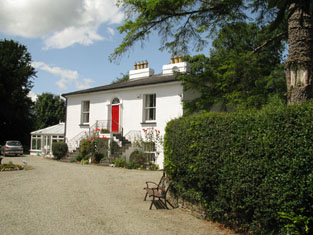
|
| Mary Ville (Kinneigh) | Leased by Joseph Hosford from the Devonshire estate at the time of Griffith's Valuation, when it was valued at £11 10s. | |
| Gardeville | Noted by Lewis in 1837 as the seat of Rev. W. Hall. Leased by Sarah Hosford from the Devonshire estate in 1851 when it was valued at £13. | |
| Capeen | Richard Hungerford was leasing this property to Henry Hungerford in 1851 when it was valued at almost £10. Labelled Cappeen on the 1st edition Ordnance Survey Map. An enlarged building is named Cappeen House on the 25-inch map of the 1890s. A house still exists at the site. | |
| Carrigmore House (Kinneigh) | James Lysatt [Lysaght] held a property in fee here, valued at £46, at the time of Griffith's Valuation. Bence Jones states that it was built in 1842 by James Lysaght on the site of an earlier house known as Connorville, which had been purchased by Lysaght from the Connor family. In 1837 Lewis had referred to it as "the deserted and dilapidated mansion of the O'Connors." In 1783 Taylor and Skinner had indicated Connorsville as a seat of the Connor family as had Wilson in 1786. An adjacent smaller house, known as Laurel Hill, was held by Adderley Bernard in 1851. Carrigmore House and 312 acres, the estate of James Lysaght, were advertised for sale in July 1853. A lithograph of the house is included in the sale rental. Lyons indicates that the estate was sold privately to James L. Holmes. Carrigmore and Laurel Hill were offered for sale in the Landed Estates Court in 1876, as part of the sale of the Holmes estate. Donnelly states that it was burnt in October 1920 during the War of Independence when it was the property of James H. Morton. The house is now derelict. | |
| Fort Robert (Kinneigh) | Described by Lewis in I837 as a "handsome residence" then occupied by Mrs. [O'] Connor. In 1851 it was leased by George Fuller from Mary Longfield [O']Connor and valued at £18. By the mid 1860s it was in the possession of Thomas Kingston Sullivan. The sale rental of 1867 records that Fort Robert had been "allowed to get out of repair, but is beautifully situated". It appears to have become ruinous by 1890s. The Irish Tourist Association Survey of 1944 stated that the ruin was the property of Judge Henry Connor and also that the house had been associated with Art [O']Connor, United Irishman. | |
| Lakemount (Kinneigh) | John J. Baylis, MD, was leasing Lakemount from the Devonshire estate in 1851, when it was valued at £14. It is still extant and well-maintained. |

|
| Dromavane House | Leased by Thomas Wrenn from the Devonshire estate at the time of Griffith's Valuation, when it was valued at £9. It it still extant and occupied. |

|
| Palace Anne Mills | A substantial milling complex and house, leased to William Norwood by Arthur B. Bernard in 1851, when it was valued at £34. Lewis referred to the property as "an extensive flour mills" in1837. The property has been converted into apartments in the last decade. |

|
| Kilmeen Glebe (East Carbery) | Reverend Edward Alcock was leasing this property from the Ecclesiastical Commissioners in 1851 when it was valued at £23. Lewis notes that there were large plantations around the house in 1837, when it was the seat of Reverend E.H.Kenney. In 1944 the Irish Tourist Association Survey reported that it was then the residence of Rev. Gorman. Buildings are still extant at the site. | |
| Bennetts Grove | Leased by Francis Bennett to William Beazley at the time of Griffith's Valuation, when it was valued at £13 10s. Lewis refers to it as the seat of Herbert Gillman in 1837. In 1814 it was the seat of Francis Bennett. The original house seems to have been replaced by farm buildings. | |
| Caherconway House | Leased by Nicholas Cummins to Daniel Bechinor [or Buchinor] at the time of Griffith's Valuation, when it was valued at almost £8. | |
| Oak Mount (Kilmeen) | Held in fee by James Gillman at the time of Griffith's Valuation, when it was valued at £17 5s. Lewis referred to it as the seat of J. Gillman in 1837. In 1944 the Irish Tourist Association Survey refers to Oakmount as "a substantial farm dwelling". There is still an extant house at the site. | |
| Coolnaconarty House | Held in fee by Herbert Gillman at the time of Griffith's Valuation, when it was valued at £6. Not labelled on the 1st edition Ordnance Survey map but named Coolnaconarty House on the 25-inch map of the 1890s. It is no longer extant. | |
| Drinagh Mills | William Scott was leasing a house and flour mills from Hibernicus Scott in 1851 when the buildings were valued at over £40. It is not labelled as a mill on the 25-inch map of the 1890s. Farm buildings exist at the site now. | |
| Kippagh Lodge | Mary Long was leasing this property from John Bryan in 1851 when it was valued at £10+. It is still extant. | |
| Ballymana House | In 1851, James Bryan was leasing this property valued almost £9 from Samuel Townsend. It is labelled Ballymana House on the 25-inch map of the 1890s. It is still extant and occupied. | |
| Ballyhalwick House | Leased by William Norwood from the Townsend estate in 1851 when it was valued at £13. Noted by Slater as the residence of William Norwood in 1894. The original house is not extant. |
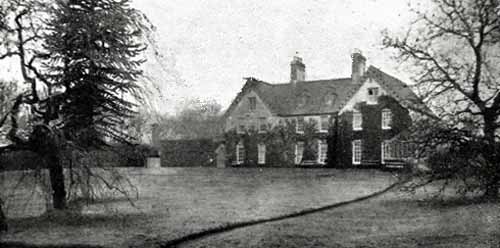
|
| River View (Dunmanway) | Rev.John Meade was leasing this property from William Norwood in 1851 when it was valued at almost £10. Adam N. Meade of Riverview, Dunmanway, owned 529 acres in county Cork in the 1870s. In 1894 Slater records Riverview as the seat of Rev. George Deacon. A house still exists at this site. | |
| Bridgemount House (Dunmanway) | Leased by Daniel Connor Jun. from Daniel O'Sullivan at the time of Griffith's Valuation when it was valued at £10 10s. A house still occupies the site. | |
| Manch | Held in fee by Daniel Connor at the time of Griffith's Valuation, when it was valued at £40. Lewis describes it as "an elegant villa four miles from the town, situated on a terrace, and surrounded with a highly cultivated demesne" in 1837. The Irish Tourist Association Survey of 1944 noted that it was then the residence of Circuit Court Judge Henry L. Connor. Bence Jone notes that the house was gutted by fire in 1963 but afterwards rebuilt. Still in the possession of the Conner family in the late 20th century. |

|
| Brookpark House (Dunmanway) | A property in the town of Dunmanway leased by Martha and Catherine Cox to John Hamilton in 1851 when it was valued at £16. It is still extant and well-maintained. |
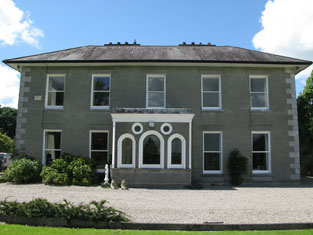
|
| Cloonties House | Mary Gillman was leasing this property from Jacob Biggs in 1851 when it was valued at £10 15s. There is still an extant house at the site. | |
| Woodbrook House & Darkwood Mill | Herbert Gillman was leasing a property at Cloontiquirk from the Cox estate in 1851 when it was valued at £25 10s and included a mill (W224535). The house is labelled Woodbrook on both the 1st-edition and 25-inch Ordnance Survey maps and is still extant and occupied. In 1943 the Irish Tourist Association Survey stated that it was the residence of Robert Atkins and had formerly been used as a convent by the Sisters of Charity. |
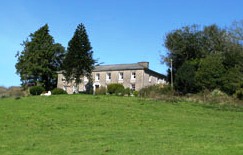
|
| The Manor House (Dunmanway) | Noted by Lewis in 1837 as " a handsome building, erected by the late H. Cox and now the residence of his family" In 1851 occupied by Martha and Catherine Cox and valued at £18. It replaced an earlier house built by Sir Richard Cox, Lord Chancellor of Ireland, at the end of the seventeenth century. Wilson describes this earlier property in 1786 as "adorned with handsome avenues and good plantations". Later the property of the Lucas family, In 1944 the Irish Tourist Authority Survey reported that it was the residence of Mr. T. O'Sullivan. |
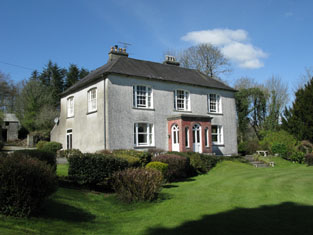
|
| Kilronane | In 1851 Joseph Bennett was leasing this property to John Jago when it and the adjacent mill were valued at £14. In 1837 Lewis referred to it as the seat of N.B. Jagoe. In the 1870s it was a Tuckey residence. There is still an extant house at the site. | |
| Prospect Hill (Dunmanway) | Elizabeth Bryan was leasing this property from the Cox estate in 1851 when it was valued at £22. There is still an occupied house at the site. | |
| Underhill Cottage | Held from Benjamin H. Holmes by William Hayle in 1851 when it was valued at £13. Now demolished. | |
| Woodlands (Dunmanway) | A house built after the publication of the 1st edition Ordnance Survey map in 1840. Leased by William Wright from the Cox estate in 1851 when it was valued at £8+. It is labelled Woodlands on the 25-inch map of the 1890s. A house still exists at the site. | |
| Lisselane | Bence-Jones indicates that this house was built by Wiliam Bence-Jones in 1851-53. A small property, owned by the family, had existed there prior to the building of the current house. The house was sold by the Bence-Jones family in 1930. The spectacular gardens are now open to the public. In 2014 the lisselan estate was offered for sale. See www.lisselan.com. |

|
| Knockbrown | A property built after the 1st Ordnance Survey was published. It was held in fee by Thomas B. O'Callaghan in 1851 when it was valued at £8. There is still an extant house at the site. | |
| Hill House (Bandon) | William C. Sullivan was leasing this house from the Devonshire estate in 1851 when it was valued at £20. It is labelled Barrett's Hill House on the 1st edition Ordnance Survey map but as Hill House on the 25-inch edition of the 1890s. It does not appear to be extant now. | |
| Carbery House (Dunmanway) | At the time of Griffith's Valuation, Francis Fitzmaurice was leasing two substantial houses at Sackville Street, Dunmanway, from Martha and Catherine Cox. One of these, valued at over £18, was leased to Rev Robert Molesworth, while Fitzmaurice was occupying the second, valued at over £15. In 1944 the Irish Tourist Association Survey referred to Carbery House "formerly occupied by Lord Carbery and now the residence of Mr. Smith". It is still extant. |
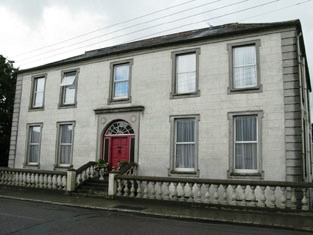
|
| Rossmore (Kilmeen) | At the time of Griffith's Valuation, Jeremiah Collins was leasing Rossmore from the superioress of the Presentation Convent in Cork. The house was valued at £13 at the time. In 1944 the Irish Tourist Association Survey referred to Rossmore as a "substantial farm dwelling", a description which is still valid. |

